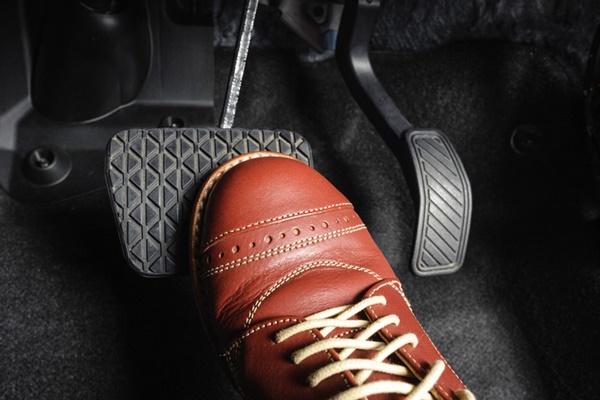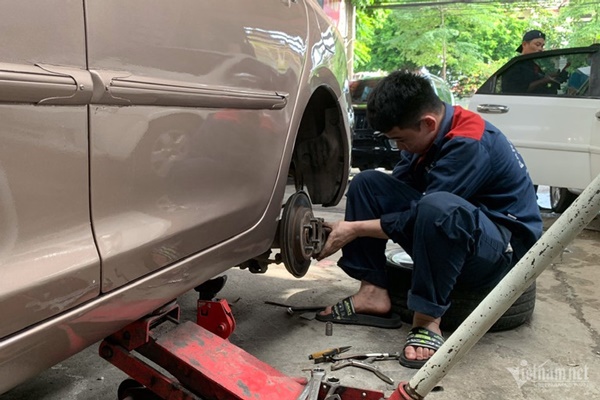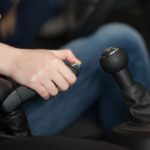Car brakes are an extremely important part that is crucial for controlling speed and ensuring safety while driving. Cars that have lost their brakes or have almost no braking effect are very dangerous because at this point the car cannot stop immediately and instead continues to move due to inertia.
In fact, there are many reasons why a car loses its brakes, such as loss of oil pressure, brake system fire, ABS failure, etc. or due to the habit of constantly pressing the brakes when going downhill.
(A recent incident of a truck losing its brakes on Lo Xo Pass – Quang Nam. Video source: Otofun)
According to driving safety experts, when you are driving and suddenly discover that the car has lost its brakes, it is important to remain calm, and at the same time pay attention to the following handling methods:
Release the accelerator, shift to a lower gear
When the car loses its brakes, the first thing to do is to release the accelerator to prevent the car from going faster, and at the same time gradually shift to a lower gear to use the engine braking force to slow down the car.
For manual transmission cars, shifting gears is relatively simple. As for automatic transmission cars, the driver can switch to automatic mode, low gear mode, or use paddle shifters on the steering wheel.
One note is to avoid shifting gears abruptly, for example, from 5th gear straight to 2nd gear or 1st gear, because the large difference in engine speed can damage the transmission. If you are using the automatic cruise control mode, you should turn off this mode immediately.
Pump the brakes continuously
A car can lose its brakes due to many reasons, including temporary causes. If you press the brake pedal and it feels hard and heavy, it may be due to temporary loss of oil pressure.
If you press the brake pedal and it feels soft and lacks power, it is likely that the car has lost its brakes due to a brake line problem. In this case, you should pump the brakes multiple times. In both cases, pumping the brakes continuously can help restore the brake pressure.

Pumping the brake pedal continuously can “revive” the car’s brakes in certain situations.
Turn on the hazard lights
To avoid colliding with other vehicles, as soon as you discover that the car has lost its brakes, you should turn on the hazard lights. At the same time, you can flash the headlights and use the horn continuously to signal to other vehicles that you are yielding.
Never turn off the engine
One important note when a car loses its brakes is to never turn off the engine, as turning off the engine will cause the car to completely rely on inertia, especially dangerous when going downhill. In addition, turning off the engine makes the power steering system ineffective, making it very difficult for the driver to steer the car as desired.
Use the handbrake
In more emergency cases where you need to stop the car quickly, you can use the handbrake. Although this type of brake does not have much effect and is mainly used when the car has come to a complete stop, the braking force from the handbrake can significantly reduce the speed of the car.
Experts also note that you should only use the handbrake when the car is moving at low speed and you want to stop immediately, as using the handbrake when the car is moving at high speed can cause the wheels to lock, leading to dangerous situations such as skidding, loss of control, etc.
Use the terrain and objects to minimize risks
When driving on a downhill road and the car loses its brakes, it is extremely dangerous. If you cannot brake the car, you should try to steer the car into empty roads, rough roads with rocks, gravel, maneuver the car, etc. to take advantage of the friction force to help reduce speed.
In some mountainous areas, there are emergency escape ramps, which are sections of the road designed for vehicles to go downhill, with thick gravel spread on them to quickly reduce speed if the car loses its brakes and enters them. When driving, pay attention to these kind of emergency escape ramps.
In unavoidable cases where you must stop the car, the driver should choose a method that causes the least damage, for example, swerving the car into obstacles on the road such as embankments, sand, grass, rice fields, etc. Because if you try to go downhill for a long distance in a situation where the brakes have been lost, it can be dangerous to the lives of the people in the car.

Losing the brakes is hard to deal with, but it can be partially avoided with good vehicle preparation and driving skills. (Illustrative image: Hoang Hiep)
To minimize the risk of suddenly losing the brakes on the road, experts provide the following advice:
– When going downhill, take advantage of the braking force from the engine (transmission), do not constantly press the brakes, which can cause the brakes to overheat and become ineffective, resulting in a dangerous loss of brakes.
– In the case of long-distance driving, if you smell a burning odor from the brakes, you should stop the car immediately and wait for about 10-15 minutes for the brake system to cool down before continuing to drive to ensure safety.
– Regularly maintain and service the brake system to ensure smooth and safe operation of the brakes. Replace the brake pads regularly, typically around 30,000-40,000 km or 2-3 years of use.
According to VietNamNet


































